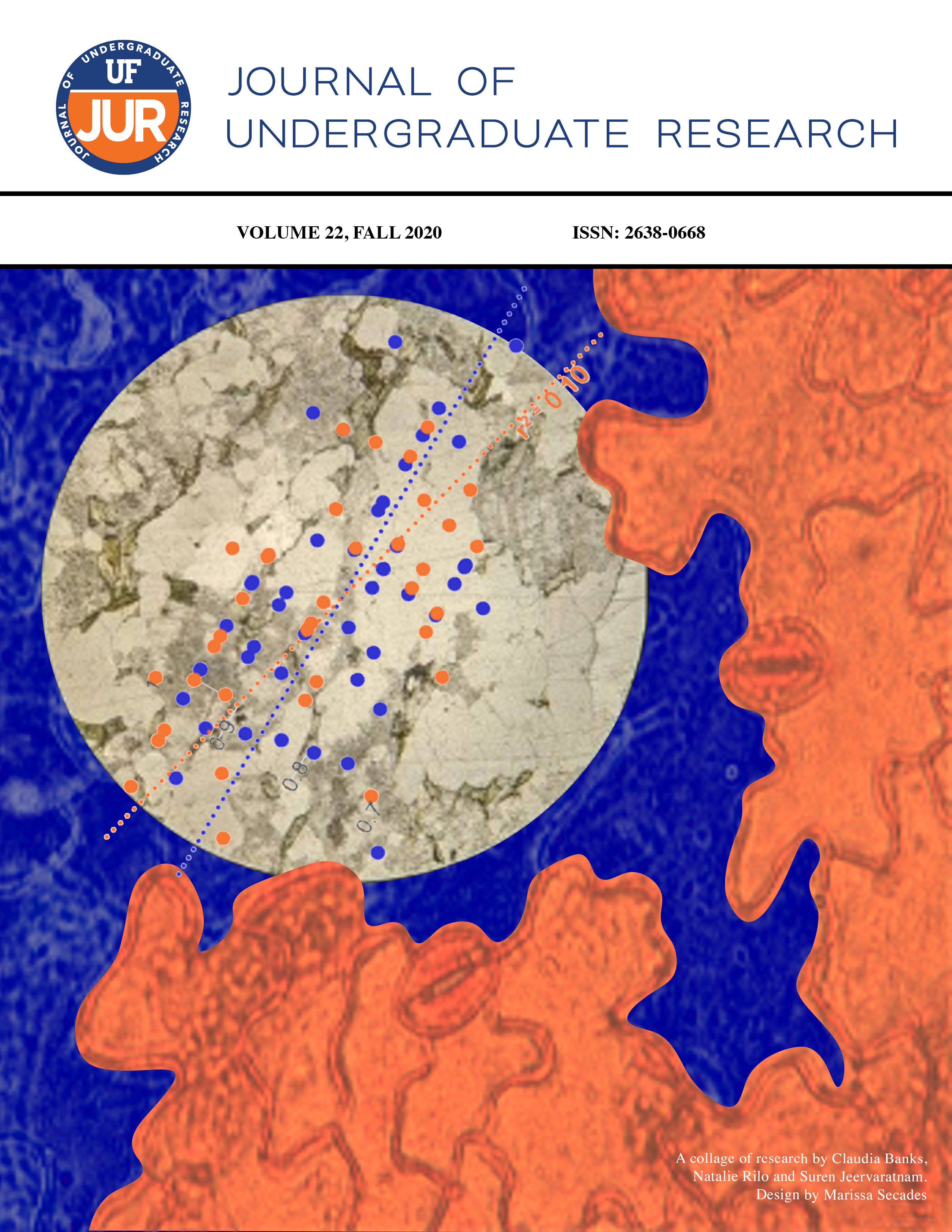Understanding the Browning Reactions in Sweet Basil
Gene Cloning and RNAi Construct Development for Polyphenol Oxidase
DOI:
https://doi.org/10.32473/ufjur.v22i0.121731Keywords:
Ocimum basilicum, Lamiaceae, polyphenol oxidase, plant browning, RNAiAbstract
Polyphenol oxidase (PPO) is a well-characterized enzyme that is conserved across plant species and is responsible for catalyzing the rapid polymerization of o-quinones that results in tissue browning. As these oxidation reactions result in significant reductions in food crop commercial viability, nutritional content, and general desirability, an opportunity exists to improve a variety of crops via genetic regulation of PPO expression. The main objective of this project was to clone the DNA sequence of genes encoding PPO. Using mRNA as a template to synthesize DNA, two putative PPO sequences were cloned from Ocimum basilicum and Ocimum americanum, two basil species of commercial relevance. A secondary objective of this project was to insert a cloned PPO sequence into an RNAi vector for the purpose of making transgenic basil plants with reduced PPO expression. A hairpin RNAi construct was successfully developed to reduce the expression of both PPO genes as their DNA sequences were highly homologous. The next step for this project will depend on the development of transformation and regeneration protocols for these species, which have proven to be difficult. Once the RNAi PPO constructs are introduced into basil cells and successfully regenerated into plants, reduced browning of basil leaf tissue when it is wounded or cut is expected.
Downloads
Published
Issue
Section
License
Some journals stipulate that submitted articles cannot be under consideration for publication or published in another journal. The student-author and mentor have the option of determining which journal the paper will be submitted to first. UF JUR accepts papers that have been published in other journals or might be published in the future. It is the responsibility of the student-author and mentor to determine whether another journal will accept a paper that has been published in UF JUR.

